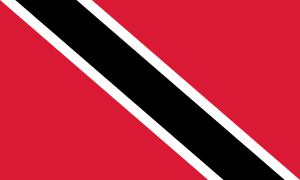Trinidad and Tobago

A nice little country composed of a major island called Trinidad, a minor island named Tobago (actually the top of an underwater volcano) and some little islets nearby. The islands are so close to Venezuela that you could think they’re part of the country; however, they are considered part of the Caribbean because of their cultural ties with it (and the fact that the official language is English, not Spanish, albeit an English spiced with a lot of local words).
The island of Trinidad was originally inhabited by tribes coming from South America, until the arrival of the Spaniards, of course. The British took the island by the end of the eighteen century. The island of Tobago was initially settled by the Dutch, but it ended up changing hands between the European powers until it ended in control of the English, when they combined it with Trinidad to form one entity. Eventually the country achieved its independence in 1962.
The country has prospered and is one of the most developed countries in the Caribbean. The fact that oil and gas deposits are around has helped the economy. Not to mention the tourism, especially on the island of Tobago.
This is also where the limbo dance originated (not from Hawaii, as it’s commonly believed).
Trinidad and Tobago shares a general Anglophone Caribbean culture with Guyana, Jamaica, Barbados, and other former British colonies in the area. However, it can probably be stated that the nation it shares the strongest cultural ties with is Guyana. Trinidad is where Chutney Music was invented, and it is extremely popular in both countries and among the diaspora from both countries. Similarly, Trinidad is where the Calypso and Soca music styles originated.
Perhaps the most famous writer of the country is Sir Vidiadhar Surajprasad Naipaul, also known as V. S. Naipaul, who writes books about colonialism (and who is also known for his Flame Bait comments).
The Trinidadian/Tobagonian flag
